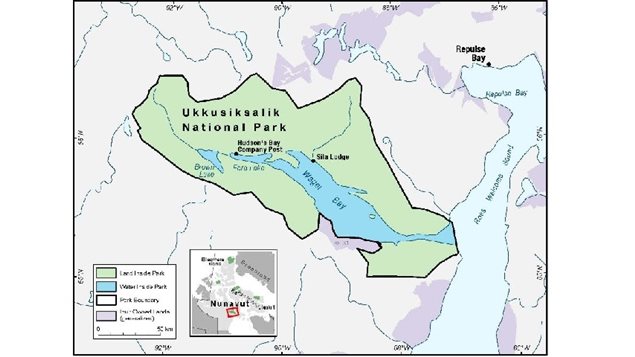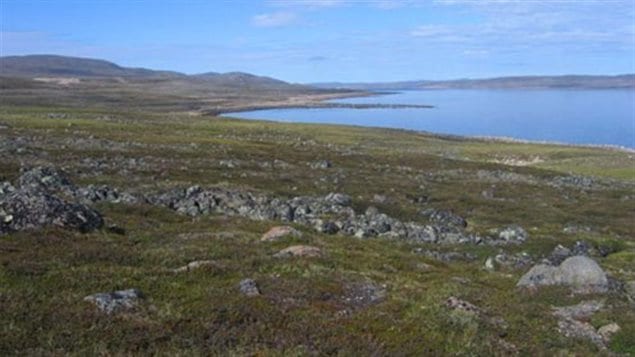Canada’s Minister of the Environment and for Parks Canada was in the Arctic this week to officially open Ukkuksiksalik National Park.
The park surrounds Wager Bay, an inlet extending about 100 kilometers inland from Hudson Bay.

The park takes its name from the type of soapstone found within its boundary, or more literally, “the place where there is stone to carve pots and oil lamps”.
At the 20,880 square kilometres, the park is home to caribou, muskox, wolf, polar bear, barren-ground grizzly and arctic hare, as well as golden eagles, peregrine falcons and other species. It also contains an impressive variety of land forms including eskers, mudflats, cliffs, rolling tundra banks and unique coastal regions.

It was, and remains, an important region for local Inuit to hunt and fish, but provides greater ecological protection to an area that now becomes the first park representing the Central Tundra Natural Region.
Nunavut Tourism points out the best time to visit Ukkusiksalik is during July and August. This is the only time of year when there is boat access to the park. Earlier visits can be made by chartered aircraft or snowmobile. However visitors must note this is a wilderness park and there are no park maintained facilities.
The sea ice in Hudson Bay usually breaks up in May or June, rendering the park inaccessible by snowmobile (or boat). Visitors should expect and plan ahead for weather delays, especially when travelling by boat. A mandatory orientation course is expected for visitors as well
In June, Qausuittuq National Park was formally established on the northern part of Bathurst Island as Canada’s 45th national park. It is expected that these parks will provide some additional jobs for local Inuit as well as providing a unique tourism opportunity for adventurers who seek to experience the magnificent beauty of unspoiled Arctic nature.







For reasons beyond our control, and for an undetermined period of time, our comment section is now closed. However, our social networks remain open to your contributions.